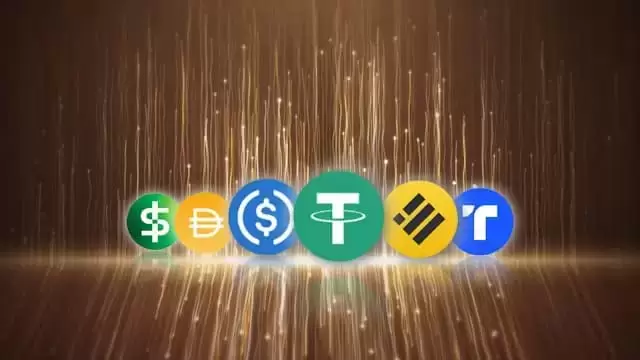 |
|
 |
|
 |
|
 |
|
 |
|
 |
|
 |
|
 |
|
 |
|
 |
|
 |
|
 |
|
 |
|
 |
|
 |
|
Cryptocurrency News Articles
Flutterwave, YellowCard, and Onafriq Join Circle Payment Network (CPN)
Apr 24, 2025 at 01:32 am
Flutterwave, YellowCard, and Onafriq have joined Circle Payment Network (CPN), a network launched by Circle, the company behind USDC

Flutterwave, YellowCard, and Onafriq have joined Circle Payment Network (CPN), a network launched by Circle, the company behind USDC, a widely used dollar-pegged stablecoin.
Flutterwave said in a Facebook post that the stablecoin network will allow it to “offer faster, cheaper, and compliant cross-border payments.”
The CPN, which was launched on April 21, 2025, now has 28 participants from global financial institutions, including FOMO Pay, HIFI, Inswitch, Legend Trading, Nilos, and Noah.
How will Circle Payment Network work?
According to a statement by Circle, “CPN provides financial institutions with a modern way to move money globally with speed.”
Jeremy Allaire, Co-Founder, Chairman, and CEO of Circle, said that “Since our founding, Circle’s vision has been to make moving money as simple and efficient as sending an email.”
According to the CPN Whitepaper, the system uses blockchain technology to enable fast, low-cost payments between financial institutions. But instead of going fully on-chain right away, CPN starts with a hybrid model — combining traditional systems with blockchain.
In this first phase, the process begins off-chain. A financial institution, called an Originating Financial Institution (OFI), uses Circle’s API to start a payment.
The OFI signs the request to send USDC or EURC to a recipient. Circle then checks that the request is valid and broadcasts the transaction on a supported blockchain, making sure the right amount reaches the Beneficiary Financial Institution (BFI).
Circle acts as both the operator and referee, ensuring everything runs smoothly and on time.
Smartcontract powered FX
Over time, CPN will shift to a more advanced setup using smart contracts. These are pieces of code that live on the blockchain and automatically carry out payments once certain conditions are met.
In this next phase, OFIs will send payments directly through smart contracts, which will confirm the token type, amount, and recipient before executing the transfer.
This change will reduce human errors, speed up settlements, and automate fee collection. It will also make transactions more transparent.
Each payment will have a unique ID and timestamp, making it easy to track and reconcile for compliance and recordkeeping.
Circle also plans to introduce an “undo” feature, giving senders a short window to cancel mistaken payments before they are finalised.
Eventually, CPN will support real-time stablecoin swaps, allowing members to exchange USDC, EURC, and other stablecoins instantly on-chain.
This could turn the network into a sort of foreign exchange system on the blockchain, handling pricing, bids, and efficient routing between different digital currencies.
For companies like Flutterwave, this opens up new possibilities. They could soon be able to use CPN to offer faster international payments, reduce transaction fees, and possibly let their users hold and transfer stablecoins like USDC directly on their platform.
Stablecoins and blockchain-based payments continue to grow in
Disclaimer:info@kdj.com
The information provided is not trading advice. kdj.com does not assume any responsibility for any investments made based on the information provided in this article. Cryptocurrencies are highly volatile and it is highly recommended that you invest with caution after thorough research!
If you believe that the content used on this website infringes your copyright, please contact us immediately (info@kdj.com) and we will delete it promptly.
-

-

-

-

- The gradual recovery of Ethereum (ETH), in the past few days beyond $1.7k, has reverberated in its layer two (L2) ecosystem, led by Arbitrum (ARM).
- Apr 24, 2025 at 06:35 am
- The renewed altcoin interest by whale investors has rejuvenated bullish sentiment, as Bitcoin (BTC) price rebounded above the crucial support level of around $90k.
-

- The price of several digital currencies, such as Dogecoin (DOGE), Shiba Inu (SHIB), and Cardano (ADA), has risen rapidly.
- Apr 24, 2025 at 06:30 am
- After weeks of sustained consolidation, these altcoins have recorded their highest price levels in the past month, setting them on many traders' watchlists.
-

-

-

- TRUMP Coin Surges After Trump Announces Private Dinner for Holders
- Apr 24, 2025 at 06:25 am
- The TRUMP meme coin is making headlines again after a massive 60% price rally. The reason? A surprise announcement that former U.S. President Donald Trump will host an exclusive dinner for the top 220 holders of the $TRUMP token. By Cointelegraph.
-





























































